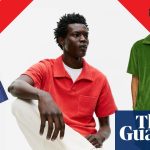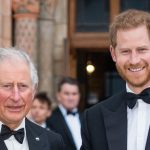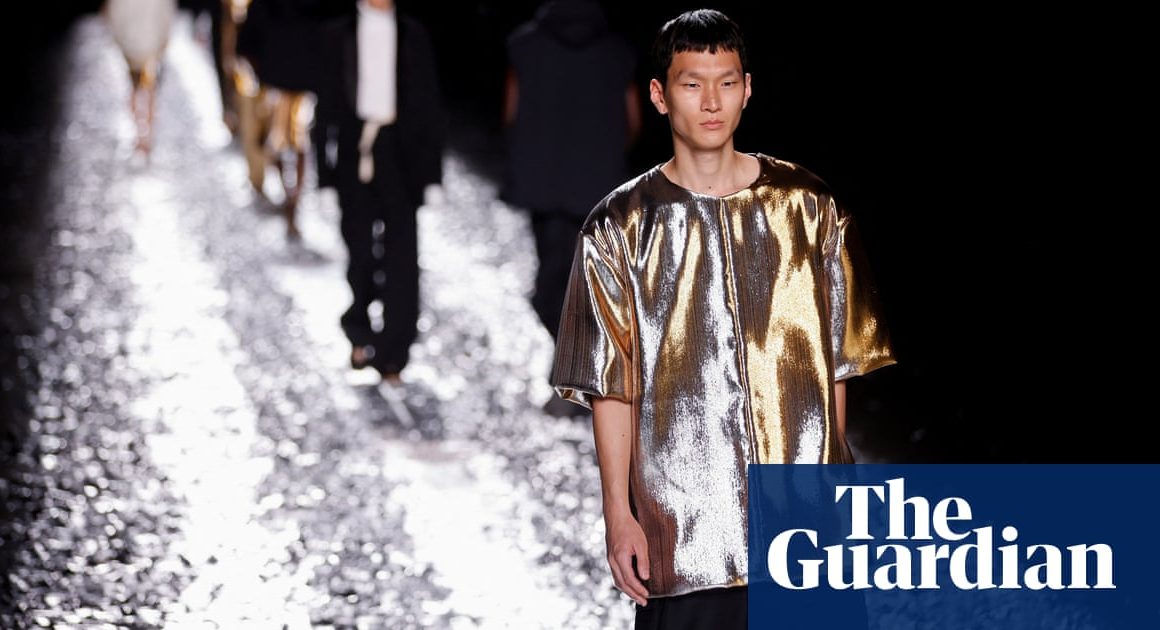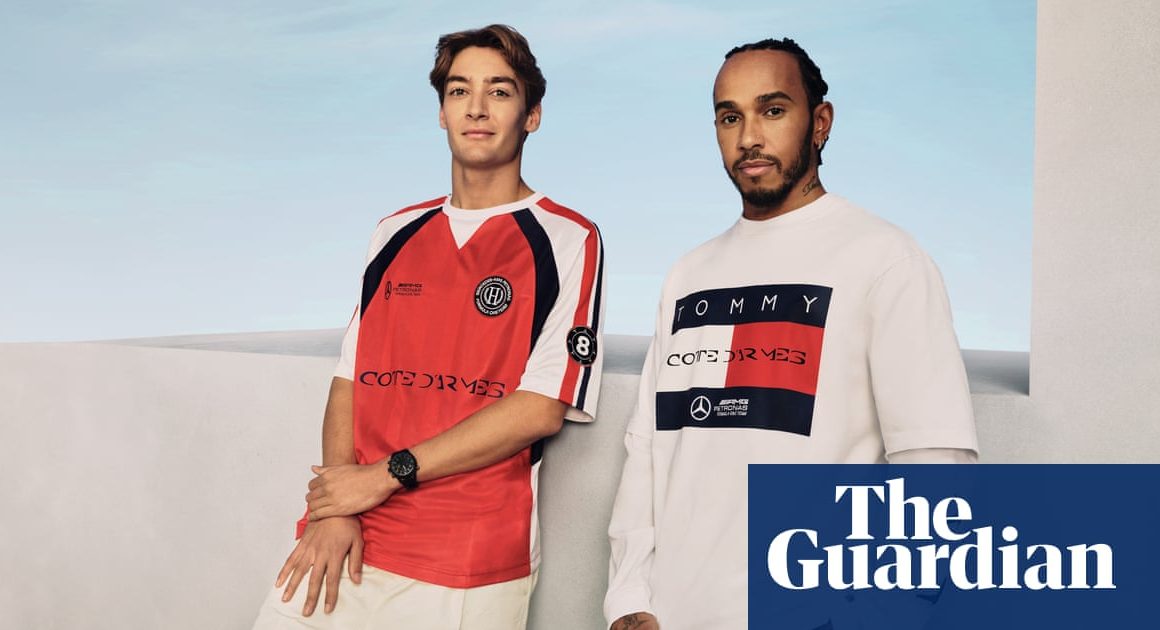When England take to the pitch for their first game on Sunday night in Germany, eyes will be trained not just on the players but on the team sitting in the stands, cheering on the squad â the wives and girlfriends of the players, the so-called Wags.
The acronym Wags first appeared in the Sunday Telegraph in 2002 â apparently coined by the staff of a Dubai hotel where the playersâ wives and girlfriends stayed. Still a relatively new phenomenon, it exploded like a glitterbomb on to the resort of Baden-Baden, where the England squad were based during the World Cup in Germany in 2006.
Englandâs coach, Sven-Göran Eriksson, had allowed players to bring their partners to the World Cup for the first time, sparking a defining moment in popular culture. At its heart was the tabloid press. The Wags of Baden-Baden were splashed all over the red tops for painting the sleepy town scarlet.
Frank Lampardâs then-girlfriend Elen Rives supposedly sang âweâre going to win the World Cupâ in the faces of German fans (which turned out not to be true) and missed her flight because she had five pieces of hand luggage. The press soon labelled them âhooligans with credit cardsâ, and it was reported that some spent £57,000 in one hour during a shopping trip and £25,000 on alcohol, mainly champagne, at an Italian bar called Garibaldiâs.
Some went on to argue that the Wags were the reason behind the menâs teamâs failure. Rio Ferdinand said the press around their presence was âlike a circusâ, adding: âFootball became a secondary element.â
Things have since evolved. The toxic relationship the media created towards this cohort has been much picked over since 2006. âAs a society as a whole, weâve acknowledged that there was a lot of misogyny in the way women were covered in the press,â says Deborah Joseph, UK editor-in-chief of Glamour magazine, who believes there has been a big shift in the media narrative.
Even the term âWagâ, she says, âisnât recognising the individualâs own identity â itâs looking at women through the lens of the partners. Inherently, thatâs quite a sexist way to cover women.â
Todayâs so-called Wags are still subjected to misogyny. England midfielder and Arsenal player Declan Riceâs girlfriend, Lauren Fryer, was mocked online recently after an anonymous account told Rice he âcould do betterâ.
They still land in the papers, with their spending habits, for instance, picked over in forensic detail. Recent articles have looked into the private jets they may or may not be taking to the Euros, the castles Kieran Trippierâs wife, Charlotte, and her cohort might be staying in, and the supersize luggage allowances that some have apparently bought to accommodate taking all their designer clobber to the continent.
after newsletter promotion
But the Wags of this generation also have the power of social media to present their own narratives with a more rounded version of themselves than the flattened persona documented in the tabloid press. The rise of content creation and influencer culture means that the women have their own community â Jordan Pickfordâs wife, Megan, has 114,000 followers on Instagram. Harry Kaneâs wife, Kate, with almost 300,000 Instagram followers, posts about the jewellery collection she designed for Loquet London, some of the proceeds from which will go to the Harry Kane Foundation.
Dani Dyer, partner of Jarrod Bowen, was famous in her own right long before she met the West Ham player, with more than 3.7 million followers on Instagram, dwarfing Bowenâs 429,000. Dyer, who appeared on the reality show Love Island in 2018, gave birth to the coupleâs twin daughters last year and has numerous collaborations with fashion brands, including her own collection of baby changing bags, highchairs and prams.
âA lot of them have control over their own image in a way that maybe they didnât in the 00s,â says Joseph.
Fashion and consumer expert Alexandra Forsyth says the key difference between Wags then and now is relatability. Despite their luxury lifestyles, âvideo formats like âspend a day with meâ show the ladies tapping into and showing their personality, and itâs more likely that their followers will be able to retain that trust and loyalty because theyâre offering a different part of themselvesâ.
Social media also enables them to discuss their own careers, or charity work. Tolami Benson, girlfriend of Arsenal star Bukayo Saka, is a senior planning executive, and Aaron Ramsdaleâs wife, Georgina Irwin, is a flight attendant.
âThey can be more educational,â says Forsyth. âThey donât have to fit a certain aesthetic. I still think they dress a certain way â they look very dressed up when they go and support their partners at football games. But we are seeing a little bit more individuality, for example, through charity work or personal projects.â
While they might still dress in the vein of glamour-inclined young women across the UK, wearing their makeup in line with the âsoft glamâ look that radiates from TikTok and sporting luxury labels like Chanel and Bottega Veneta mixed with the fast fashion brands Prettylittlething and Femme Luxe, they are not responsible for a âlookâ in the same way as the Baden-Baden crew.
The Wags of the past almost single-handedly created an aesthetic that was copied by women nationwide: Ugg boots paired with miniskirts, Juicy Couture tracksuits and Balenciaga handbags, Louboutins paired with low-rise denim and cami vests.
There is another shift. Instead of looking solely to the Wags for fashion and beauty inspiration, the footballers themselves are ever more the focus. Jude Bellingham appeared in the press in his boxer shorts advertising Kim Kardashianâs underwear brand, Skims, last week, while Norwayâs Erling Haaland, who is known for his meticulously slicked ponytail, this year became the minority owner of his favourite hair tie brand, and no one batted an eyelid.
Contrast that with David Beckhamâs £4m deal with the hair product brand Brylcreem in 1997, which his then-manager Alex Ferguson worried would hinder his ability to become a âreally great footballerâ.












